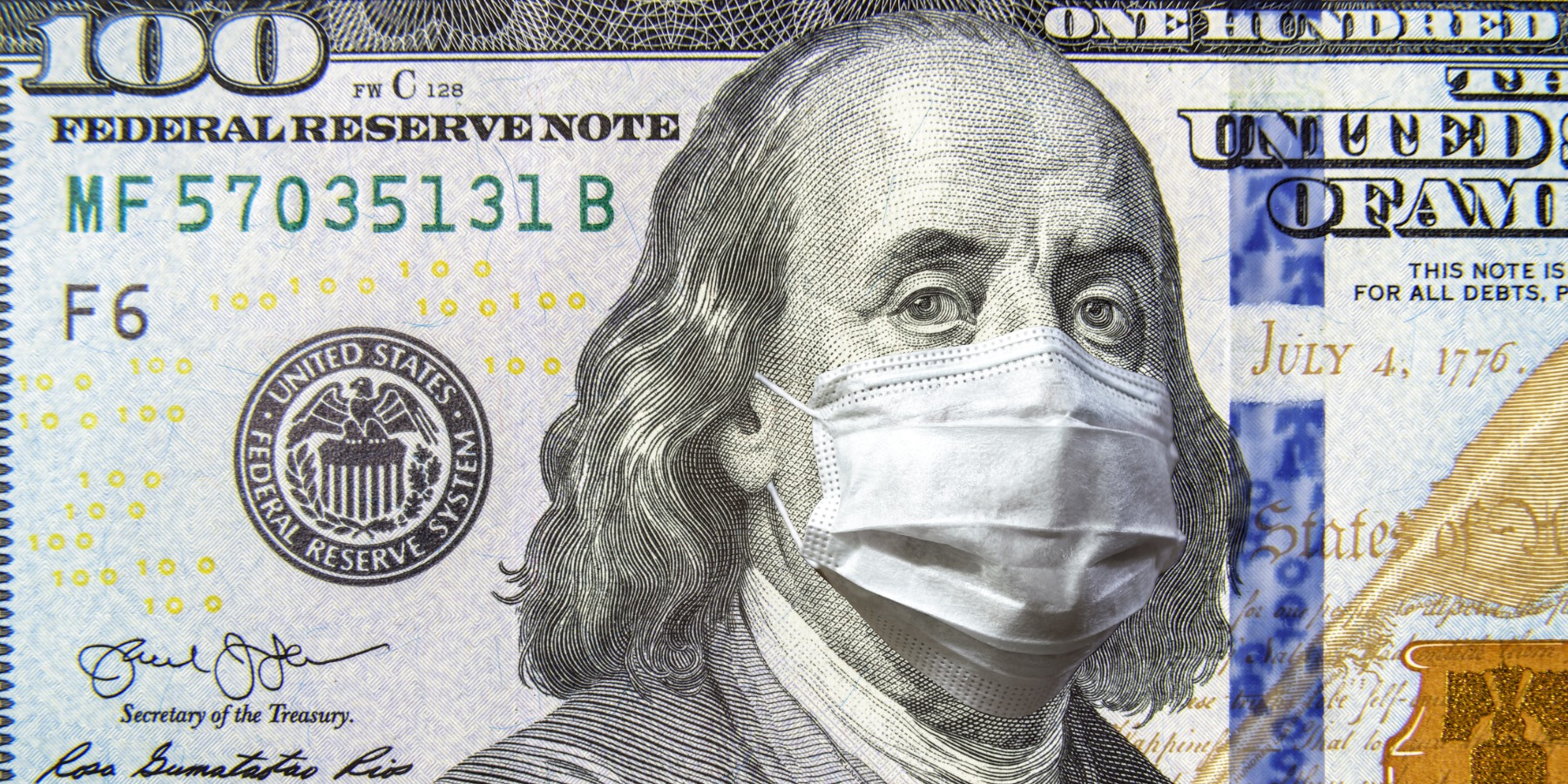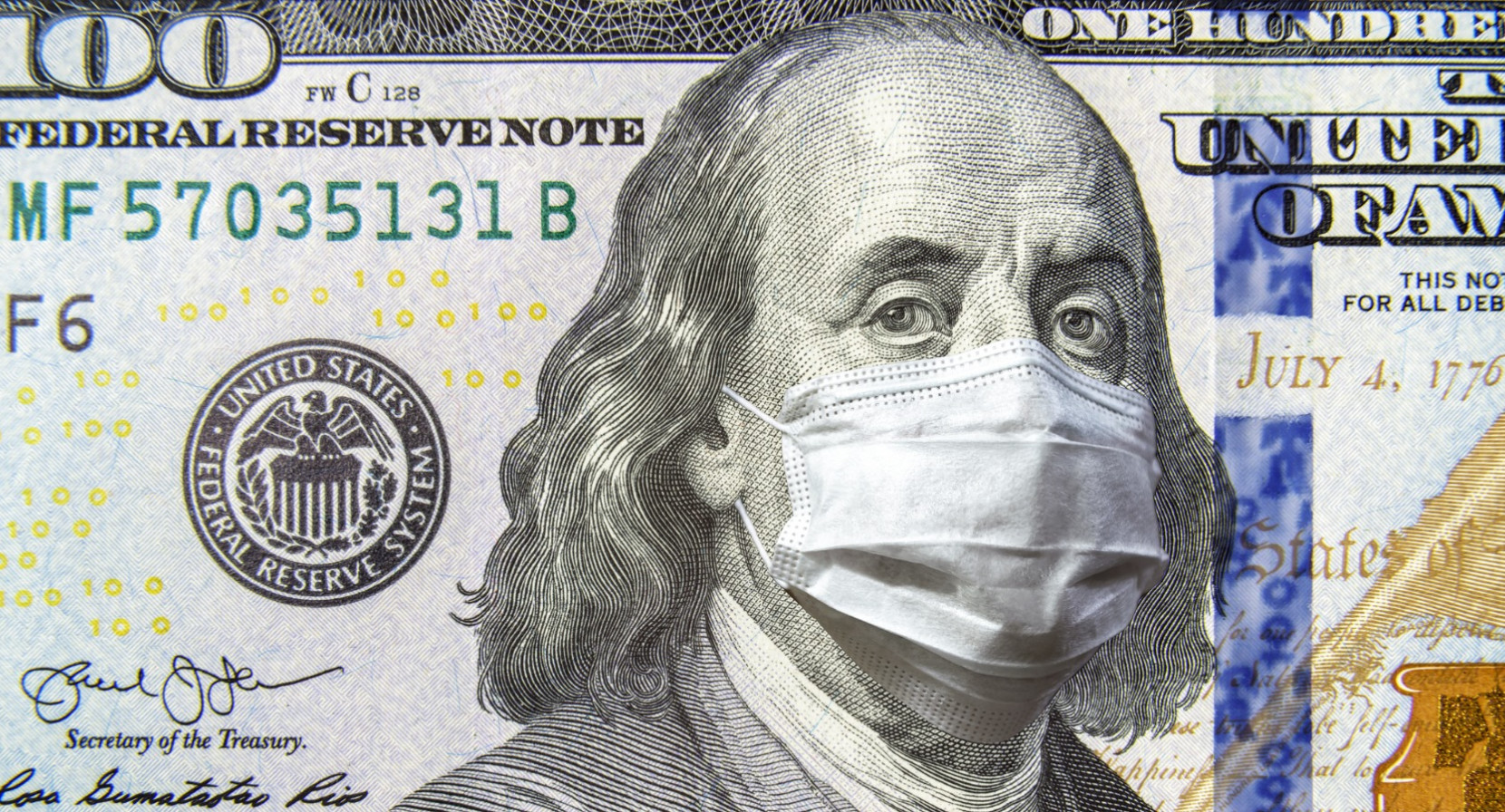The past two days have brought the first significantly positive news about the COVID-19 virus. While the overall news is still bad by any measure, with many more people continuing to get sick, be hospitalized and die, the trend in all these measures has improved markedly in most of the hot spots. There are some exceptions (Japan among others), but Europe and New York City are showing significant reasons to hope their peaks are behind them.
As a result, a number of the projection models are now signaling that the worst may be over sooner than was expected and with a lower cumulative toll.
The stock market has reacted dramatically to the change in trend, with a massive rally yesterday that appears poised to follow through today. It’s important to remember that the stock market is a "second-level" thought processer — it’s not reacting to the current news (still bad), it’s reacting to what today’s news is telling it about how things are going to be six months or a year from now.
In the face of this most recent market turn for the better, it’s helpful to pause and take inventory of both what we know and what we don’t know.
What we know
On a big picture level, there are a number of foundational truths we all need to know, as recounted in our April Editorial. They’re worth reviewing often! I’m going to point to that link and move on to the more "current event" type items.
Most importantly, we know that any good news on the virus front is huge on a human level. This means fewer real people getting sick, being hospitalized, and dying. Thank you, Lord!
Shifting to a more financial/market analysis...
We know (or at least really, really hope) this virus isn’t going to keep the world in lockdown forever. There have been past pandemics and the world eventually recovered and moved forward. The Spanish Flu in 1918 is brought up often right now, and that was before much of our modern medicine weaponry was developed. There is great effort being expended on vaccine and treatment research and every reason to believe those efforts eventually will bear fruit.
We know most diseases like this follow a curve and we have good reason to believe that these improving numbers in recent days are going to persist because scientists have been modeling the likely trajectory of these curves. What we’re seeing is more or less what they’ve been expecting, which is encouraging.
We know businesses, especially small businesses, are hurting badly.
We know individuals, especially those without emergency savings (which is a huge portion of the population) are hurting badly.
We know the government and Federal Reserve have unleashed an unprecedented amount of financial support, targeting the financial markets, small businesses, and individuals directly.
We know that this "relief rally" is largely about the hope that the end of this awful period we’ve been living through is near. There’s no solid basis yet to project what the economic recovery will look like, but the fact that the virus news is shifting from "getting worse" to possibly "getting better" is certainly significant.
What we don’t know
We don’t know whether this is the final end of the big COVID-19 story, or if this is just "the end for now." The Spanish Flu had multiple waves and we’re already seeing some evidence from the first countries to go through this (China, Japan, Singapore) of second waves kicking in as restrictions have been eased. It’s simply unknowable whether we’re going to be looking at another lockdown period this fall/winter, or possibly rolling geographical lockdowns across the country and around the world. Hopefully, testing will improve to the point where if there do have to be further lockdowns, they can be localized to the point where the entire national/global economy doesn’t have to keep shutting down.
We don’t know what the follow-through effects on the economy will be from what has already happened, much less the future scenarios I just described. The markets have never seemed to move past the short, V-shaped recovery idea where the economy snaps back to full strength relatively quickly. The officials in charge have repeatedly pushed this idea (as Matt’s post yesterday showed), with analogies of the economy being a finely-tuned car just slowing down briefly for a construction zone, and so forth. Maybe that’s accurate, but maybe some portion of those small businesses don’t reopen at all, and some portion of those jobs don’t come back.
We don’t know... well, I could list a dozen "we don’t knows" related to the resumption of economic activity, but just to get the idea, consider a few questions: How soon are people going to feel comfortable eating in a crowded restaurant again? How soon are people going to be willing to get on an airplane for vacation or a business convention where there will be hundreds or thousands of other people from all over the country/globe? And how much have the past couple of months impacted the financial ability of households and businesses to pay for those types of "optional" expenses? This could unfold in any number of ways, in part based on the scientific development side of testing, vaccines, and treatments.
We don’t know how much $6 trillion of combined effort from the government and Fed offsets the negative economic impacts of the previous two paragraphs. Is it just filling in the hole that has been created, so there’s little net effect in either direction? Is it not enough? Is it more than enough, so it ends up being stimulative? Don’t know.
We don’t know what impact, if any, the government basically going $6 trillion further in debt has, either in the short- or longer-term.
Analysis
There are many more "known/unknown" items we could add to both lists. The point of the exercise is, more than anything, to illustrate just how much everyone is guessing right now. SMI has written often over the past 30 years about how little the "experts" really know about the future and that, as a result, we should be skeptical of their predictions. But today’s situation is exponentially more so given that so much hinges on the behavior of a virus/pandemic, the lasting effects of which are beyond our ability to project with any degree of certainty.
So does that mean we’re just flying blind?
Thankfully not. While most investors are trying to figure out which aspects of the conversation we’ve been having are most important and how the market will react as a result, at SMI we use mechanical strategies that will respond automatically as the market’s longer-term trends become better defined.
This is so important at a time like this, when it’s otherwise impossible to know whether a big rally such as we’ve seen the past two days is the beginning of a new bull market, or if it’s just the classic counter-trend rally we’ve been expecting since this bear market kicked off a little over a month ago. Without a system to interpret this market data as the trends unfold, a person is left guessing in a situation like this, because there is no historical playbook to reference. I don’t care if you’re an individual investor or the head of an investment bank — there are some things that are just unknowable, and we’re staring at a bunch of them right now.
The comforting news for SMI investors is our trend-following strategies won’t let us stay on the wrong side of the market for long. I know that every day feels like a week when the markets are behaving the way they are lately — and that’s doubly true when it moves "against" a position the strategies have recently taken. For anyone overly concerned that we recently got even more defensive and now the market is flying higher this week, I’d simply remind them of our early-February experience, when DAA shifted us out of risky asset classes and into conservative ones. For three weeks that felt awful as the market rallied. Then in just a matter of days, the bottom fell out from under the market and suddenly those DAA moves looked like pure genius.
The same dynamic could easily play out again here, either over the coming months — or even by the end of the week, as volatile as the market is lately! Remember, market volatility is extreme during bear markets in both directions, down and up. Consider that yesterday was sixth-best percentage gain for the Dow in the last 87 years...but only the third-best in the last month (h/t Eddy Elfenbein).
My suspicion all along has been that this bear market is going to be a prolonged event, not a quick one. That’s based on a combination of factors, most importantly the fact that almost all bear markets are measured in months, not weeks. In addition, that view is informed by the fact that market valuations were extremely high coming in, and a number of other factors (such as corporate debt) had been pushed to historic extremes.
But I don’t know that’s how this will play out. Maybe it takes another year, maybe the worst is over already. Thankfully, it doesn’t really matter if I’m right or not in terms of our investing approach, because that’s going to be driven by the SMI strategies either way. Instead of guessing which is right, use the proven compass of these strategies. They’ll navigate us through the fog ahead and get us safely to the other side.









